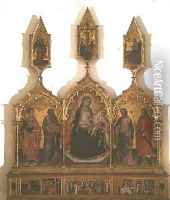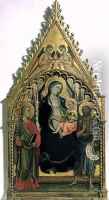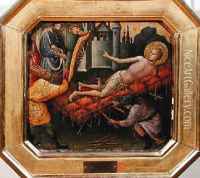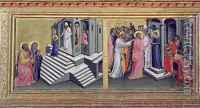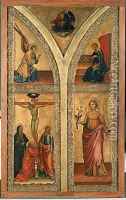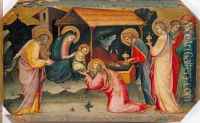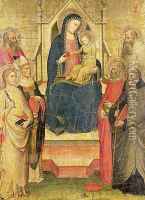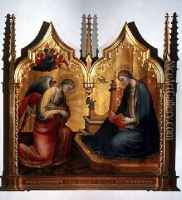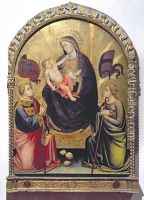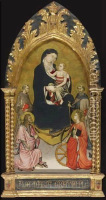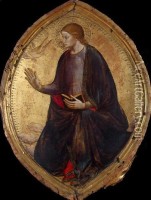di Nardo Mariotto Paintings
Mariotto di Nardo was an Italian painter of the late Gothic period, active mainly in his native Florence during the early Renaissance. Born in 1394, Mariotto was part of a family of painters, which often led to his work being intertwined with the artistic trends and developments of his time. While not as widely recognized as some of his contemporaries like Masaccio or Fra Angelico, Mariotto contributed significantly to the art scene in Florence, showcasing the transitional elements from Gothic to Renaissance styles in his paintings.
Mariotto's work is characterized by its vivid color palette, detailed backgrounds, and religious themes, typical of the period. He was deeply influenced by the International Gothic style, which is evident in the elegant and somewhat elongated figures he painted, as well as in the attention he paid to ornate backgrounds and decorations. Despite these Gothic influences, hints of the emerging Renaissance style can be seen in his attempts to incorporate perspective and a more naturalistic approach to human anatomy and expressions.
Throughout his career, Mariotto was commissioned to produce a number of altarpieces and frescoes for churches and convents in and around Florence. One of his most notable works is the altarpiece for the Church of San Pier Maggiore in Florence, which showcases his skill in creating complex compositions and his ability to convey religious narratives with emotional depth and richness.
Mariotto's contributions to art were not limited to his paintings; he was also involved in the artistic community of Florence, participating in the early stages of what would become the Florentine Renaissance. His works were influential in the gradual shift towards more naturalistic and human-centered art, which would come to define the Renaissance.
He died in 1457, leaving behind a legacy that, while overshadowed by the giants of the Renaissance, remains an important link in the chain of artistic evolution in Florence during the early 15th century. Mariotto di Nardo's art provides a window into the transitional period between the Medieval Gothic and the early Renaissance, reflecting the complexities and the beauty of this transformative time in art history.
